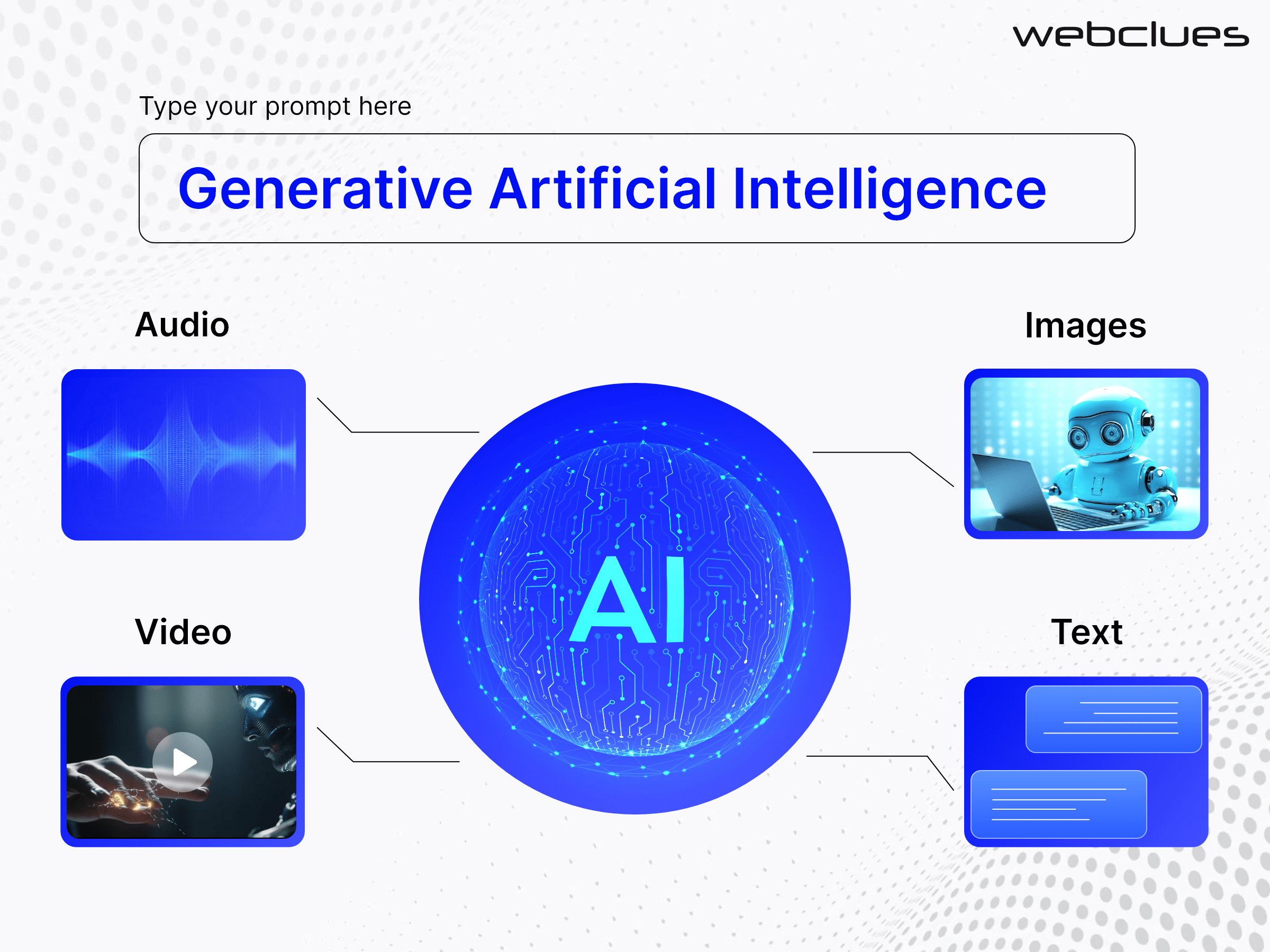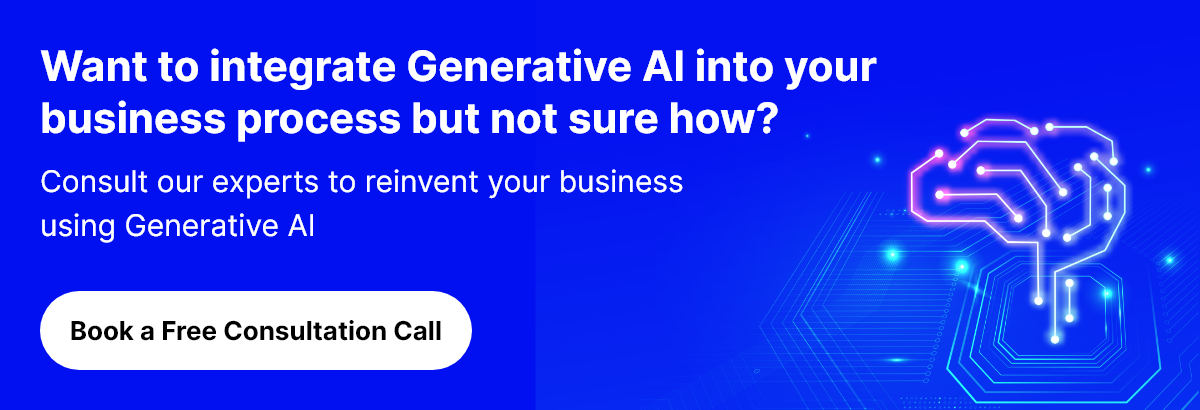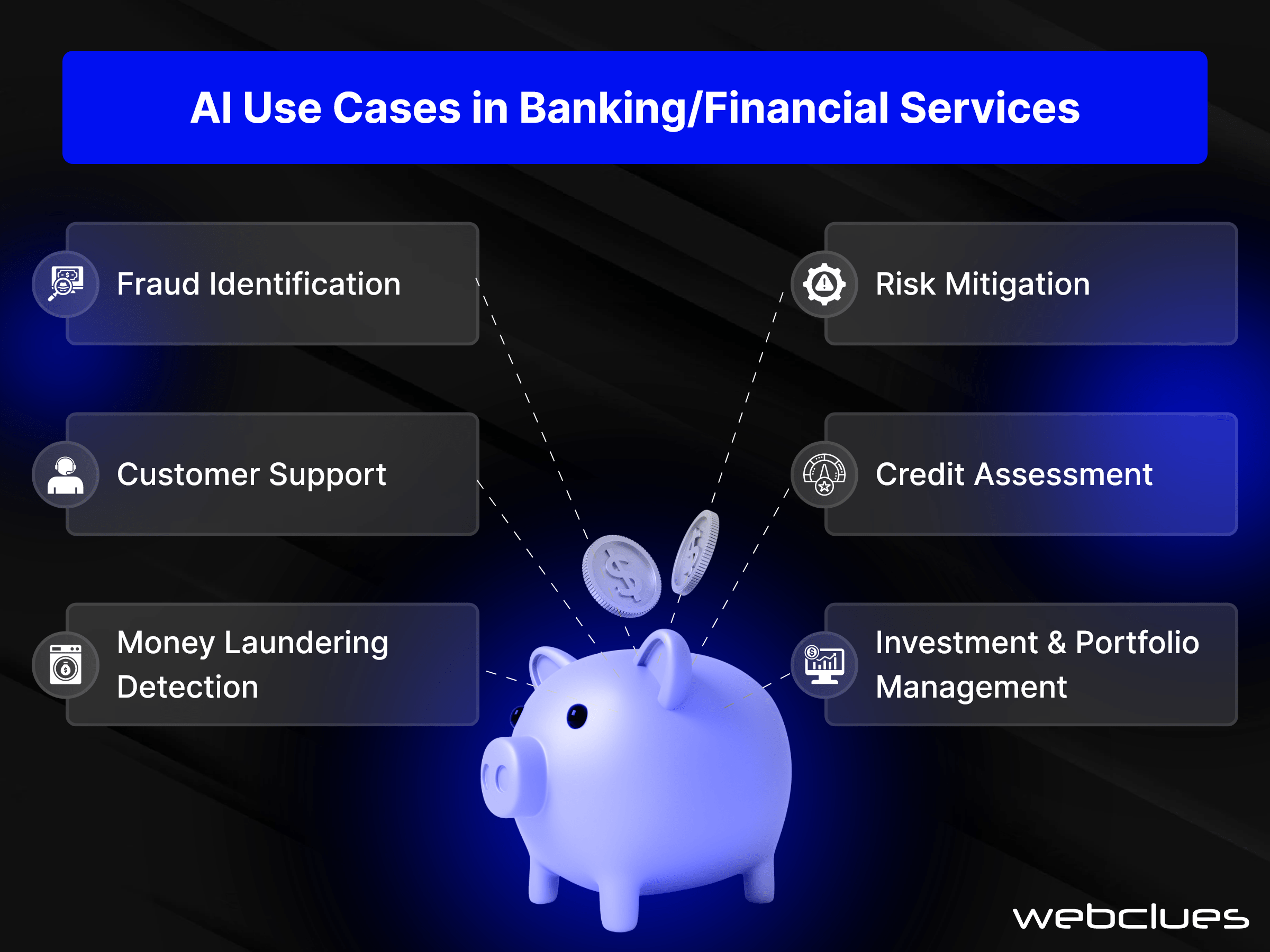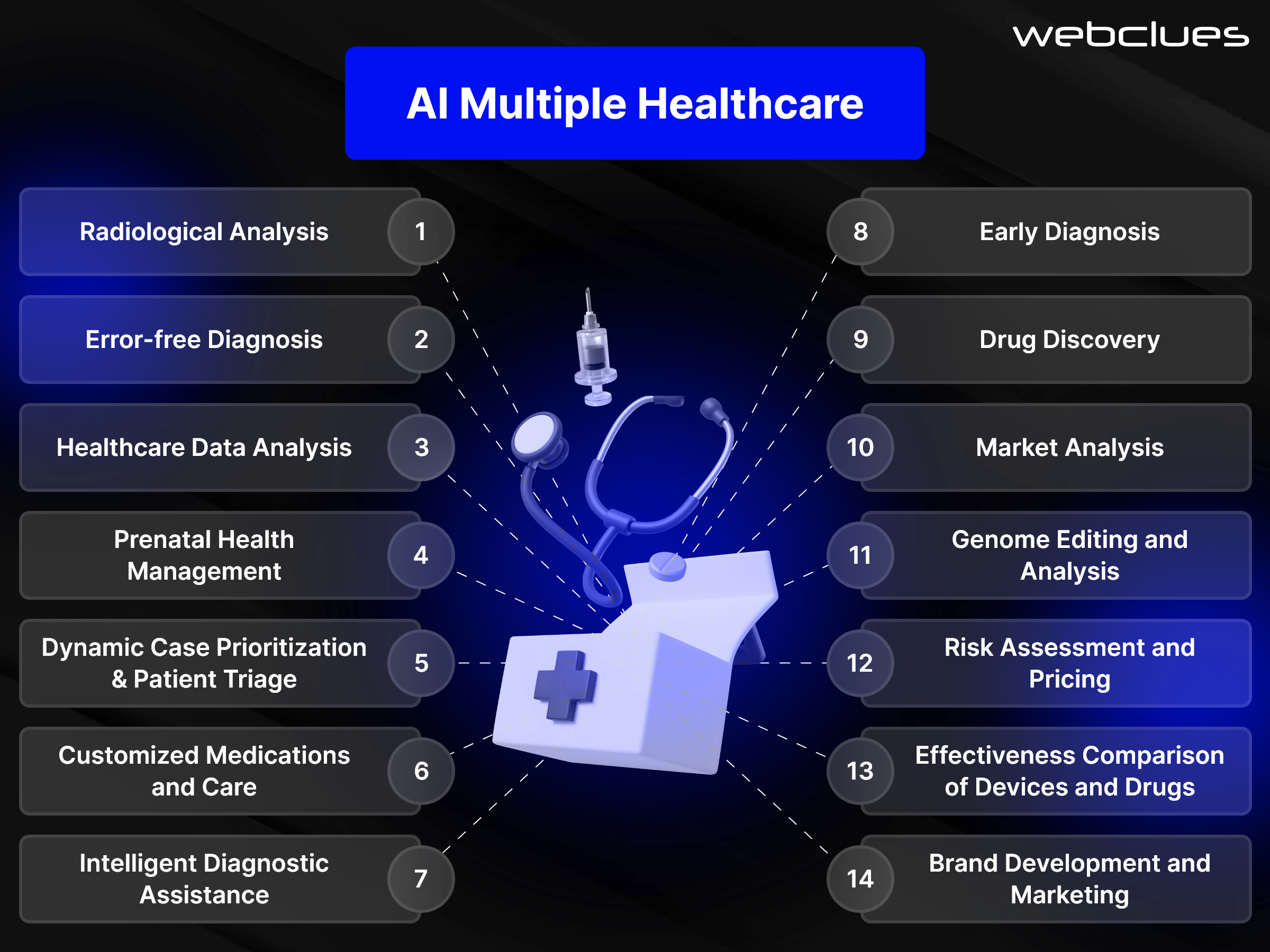What Is Generative AI? Everything You Need to Know

Nothing has caused a stir in the technology world quite like Generative AI. Venture capitalists are pouring millions into startups harnessing this technology. This surge in popularity shows no sign of slowing down. Such extraordinary development raises a lot of curiosity surrounding the topic, with many wondering what is Generative AI exactly and how it works.
This article aims to answer these questions and cover everything else one needs to “crack the code” of Generative AI.
What is Generative AI?
By definition, Generative AI is a type of artificial intelligence that generates prompt output in the form of text, video, audio, or images based on raw or training data. In other words, it’s like a magic wand you wish you had in your pocket as it generates new and original data, documents, or information with a mere flex of your fingers.

While the exponential growth in interest has only been seen since the latter part of 2022, Generative Artificial Intelligence as a technology is not at all new. It was introduced in the 1960s in chatbots, but then it could not create an authentic output of and for real people. It was only after 2014, with the introduction of a particular type of machine learning algorithm called generative adversarial networks or GANs, that it could convincingly do that. This brings us to the following question.
How Does Generative AI Work?
Generative AI is typically a machine learning framework. At the foundation of machine learning, are neural networks (inspired by neurons in the human brain) that process large amounts of data such as text, code, or images, using a complex structure of algorithms. Generative AI models utilize these neural networks and analyze large datasets to identify patterns from them. This enables them to produce novel and original data or content.
To understand the working of Generative AI in simpler terms consider the following example.
A chef wants to create an entirely new and innovative dish by combining elements and flavors from different cuisines. To accomplish this, he studies a wide range of recipes and culinary techniques. Similarly, Generative AI models learn from numerous sets of data and use that knowledge to produce new and original output by blending elements from the original data.
To further explicate the working of Generative AI, let us explore the two most currently popular types of generative AI models it uses to achieve the results.
Generative Adversarial Networks (GANs)
Generative adversarial networks or GANs are one of the most popular Generative AI models. They typically utilize two different types of neural networks – a generator and a discriminator. Both networks undergo self-supervised training by studying real data from the training set and work together, by complementing each other, to generate high-quality, realistic output.
The generator produces new data in the form of audio or image, based on the input prompt or a random noise signal and the available real data in the training set. However, to produce more realistic results, it needs assistance from the discriminative network, which is trained to match the generated data with the real data to distinguish between them.
Now the algorithm is called an adversarial model because the generator will continue to generate new data until it is successful in tricking the discriminative network such that it cannot distinguish the generated data from the real data.

Transformer-based Models
Transformer-based models work best for applications where the context is important, for instance, translating or generating texts. This is because instead of using individual data points, transformers use sequential data and track internal relationships, thus learning context and meaning. These models are further supported and enhanced by Large Language Models (LLM). Popular language models such as GPT-4 and ChatGPT use these models to excel at natural language processing tasks like language modeling, answering questions, and image recognition.

Other Popular Models
Apart from the two models discussed above, here are a few other popular ones worth knowing about.
Variational Autoencoder Models (VAEs):
Just like GANs, variational autoencoder models consist of two different neural networks – encoders and decoders. Encoders take extensive amounts of data as input and compress it into a lower dimensional space. The decoder then uses this compressed representation to create new samples akin to the original data.
Recurrent Neural Networks (RNN):
The USP of RNN is that it can remember past inputs. This unique ability enables these models to efficiently handle sequential data and generate outputs that consider the context and sequential relationships. This makes them ideal for natural language processing and speech recognition.
Some of the Best Generative AI Tools (ChatGPT, Dall-E & BARD)
The recent buzz around Generative AI can be attributed to the following popular tools and programs.
1. ChatGPT:
Introduced in the November of 2022, ChatGPT Generative AI took the world by storm with its realistic, human-like text responses in the form of conversation. It has certainly come across as one of the most popular and impressive Generative AI tools. Built on OpenAI’s GPT 3.5 implementation, ChatGPT utilizes a chat interface and incorporates the history of its conversation with a user to provide interactive and fine-tuned text responses. Recently, Microsoft announced a substantial investment in OpenAI and integrated GPT into its search engine – Bing
2. Dall-E:
Dall-E, another groundbreaking AI tool from OpenAI, generates realistic images and art from simple textual prompts. It identifies connections across various types of media, including images, text, and audio by learning from a large dataset of images and text descriptions associated with them.
3. Bard:
Followed by the implementation of GPT into Microsoft’s Bing, Google unveiled its own generative AI chatbot, Google Bard. It is built on Google’s Pathways Language Model 2 (PaLM 2). Designed around search, it provides results based on more natural language queries instead of keywords. Like ChatGPT, it is capable of producing original content as well.
Benefits of Generative AI
The benefits of Generative AI are many and it is because of these compelling advantages, its popularity has gone through the roof. Individuals and businesses can extensively apply Generative AI across a myriad of areas, effectively improving existing workflows. Here are some of the key benefits.
- Increased Efficiency: Generative AI can help Increase work efficiency and boost productivity by automating tasks & processes that would typically demand manual labor. This can enable humans to focus their time and energy on more strategic objectives.
- Faster Results: By completing tasks in a few seconds that would otherwise require hours, Generative AI can significantly make processes faster.
- Cost Savings: Task automation through Generative AI can lead to a reduction in labor costs and save you a considerable amount of money.
- Better Decision-Making: Efficient data generation and analysis by Generative AI can reasonably improve decision-making. For instance, generative AI can be utilized to predict consumer behavior, identify trends and optimize operations.
- Increased Creativity: Generative AI can greatly boost creativity by helping businesses and individuals generate new designs and ideas that may include marketing concepts, new product ideas, and even art.
- Enhanced Customer Experience: Generative AI can help businesses provide their customers with a more personalized and engaging experience. For instance, chatbots are extensively used to answer customer questions and even provide consumer support.
Limitations of Generative AI
The generative AI benefits certainly encourage its application to various industries and domains. We already discussed how some of the popular models have shown immense potential in transforming these industries. However, utilizing these models for enterprise applications does come with several challenges and limitations.
Here are some of the key challenges and limitations of Generative AI that organization shall need to address for its seamless implementation.
- Lack of Control Over Generated Outputs:
While generative AI models are trained on specific datasets and generate original output referring to those datasets, it can be challenging to generate results, having specific characteristics.
- Quality and Coherence
The quality of the output given out by generative AI systems depends on various inconsistent factors such as the amount of data, training algorithms, and the complexity of the model. As a result, if there is a lack of data, the system is poorly trained or the model is overly complex, the output can be erroneous and nonsensical.
- Bias and Ethics
Since generative AI models are trained on existing data, they may inadvertently replicate the biases present in them. This makes addressing bias and ensuring ethical use in the generated output considerably challenging, resulting in unfair or discriminatory results.
- Dependency on Data
As discussed previously, the quality and usefulness of the output generated by generative AI models primarily depend on the training data. So without sufficient and diverse data, the output content may not be meaningful enough.
- Computational Requirement
Large datasets and computational resources are required to train generative AI models. This can be expensive and time-consuming, limiting their accessibility and scalability in certain applications.
Generative AI Applications
Generative AI has come across as revolutionary technology, letting creators, engineers, researchers, scientists, and others effectively streamline their workflows. Generative AI models can generate diverse content across multiple modalities like text, image, audio, video, or code, using a wide range of data.
Generative AI applications, based on the modality of output content
| Textual | Marketing content, note taking, code development, essay generation, and gene sequencing. |
| Visual | Video generation, image generation, 3D models, design, etc. |
| Auditory | Music generation, dubbing & localization, voice cloning, etc. |
Industry-Wise Use Cases of Generative AI
Generative AI has the potential to revolutionize the organizational processes of businesses across various industry domains. It can improve these processes by means of diverse use cases, including data analytics, design and development, content creation and repurposing, predictive maintenance, and risk mitigation.

Let’s see in brief how these use cases can enhance processes across different industries.
E-Commerce
The most prevalent generative AI use case in eCommerce is in the form of AI chatbots. From being a virtual shopping assistant to providing customers with personalized information regarding products, offers, and pricing, these AI chatbots can make the lives of both business owners and customers easier. Furthermore, generative AI can help eCommerce businesses significantly improve consumer experience by various other means. For instance, utilizing virtual try-ons for clothing, accessories, and cosmetics, creating 3D visualizations of products, and optimizing product configurations. It can even analyze historical sales data and market trends to help eCommerce businesses optimize inventory and forecast demand.

Finance
There are numerous use cases of generative AI in finance. With the help of this technology, fintech companies can greatly enhance productivity and mitigate bottlenecks. Some of the key applications wherein generative AI can prove to be useful include fraud detection through pattern identification, portfolio management by analyzing market data, risk assessment, and generating trade strategies.

Medical & Healthcare
One cannot emphasize enough the importance of generative AI in healthcare and medicine. It can help medical professionals make more accurate diagnoses by analyzing medical images. Physicians can also use it to identify useful information from large sets of unstructured Electronic Health Records (EHRs) and make effective treatment decisions. They can also utilize it to generate personalized treatment plans based on a patient’s personal health data like medical history, genetics, and lifestyle. Moreover, generative AI can assist pharmaceutical companies in drug discovery by generating novel compounds and predicting their properties.

Education & Training
Generative AI in education can effectively streamline the learning process for both in-class students and self-learners. It can facilitate personalized learning by creating adaptive learning environments by generating tailored educational content and providing personalized feedback to students. Furthermore, Teachers can utilize the technology to develop personalized study materials and evaluate and grade the performance of students.
Manufacturing
From product design and development to the enhancement of sales and support processes using AI chatbots, generative AI can work wonders for businesses operating in the manufacturing and supply chain domain. The technology can also be utilized to identify a device’s usage patterns and specific needs and thereby improve machine maintenance. Business owners can also automate complex manufacturing processes like assembly line optimization and quality control using generative AI tools.

Entertainment
The most vital application of generative AI in the entertainment and media industry is in generating fresh content – be it written, music, or art. Generative AI can make creating virtual characters with unique traits and behaviors extremely feasible. This can drastically simplify the process of producing video games and virtual reality experiences. Generative AI models can even assist entertainment businesses boost sales by helping them create more sophisticated content plans and marketing strategies.

Concerns Surrounding Generative AI
While generative AI is seemingly moving towards changing the world for the better, it also raises grave concerns, relating to the quality of results, chances of misuse and abuse, and disruption of existing business models. Here are several specific concerns associated with generative AI.
- One of the risks of generative AI is that it has the potential to generate inaccurate and misleading content that can lead to misinformation and disinformation.
- Without knowing the source and origin of information generated by AI, it becomes more difficult to be able to trust and verify its authenticity.
- AI-generated content can lead to new forms of plagiarism, relating to the ownership of the content and disregard for the rights of the original content creator.
- Generative AI can potentially disrupt existing business models based on search engine optimization and advertising.
- The use of generative AI to generate and spread fake news can lead to significant societal and political implications.
- Machine learning approaches such as deepfakes can make it extremely difficult to distinguish generated media from real media, leading to serious ethical implications.
- Using generative AI to impersonate individuals, it becomes easier to create convincing and effective social engineering attacks.
Wrapping It Up
Generative AI is revolutionizing the way we tackle complex problems, whether it's in generating innovative content, writing codes, or personalizing experiences. However, the advent of any new powerful technology is accompanied by several concerns surrounding it. As we look to the future of generative AI, it is crucial to navigate these challenges responsibly and ethically, ensuring that the potential of this technology is harnessed for the greater good. With ongoing advancements and progress in research, the future of generative AI holds even more promise, unlocking new possibilities and transforming the way we live, work, and interact.
At WebClues, we are at the forefront of harnessing generative AI's potential to transform industries and drive innovation. Contact us today to discover how our expert team can leverage this cutting-edge technology to create personalized and impactful solutions for your business. Let's shape the future together!
Build Your Agile Team
Hire Skilled Developer From Us
Want to harness the power of Generative AI for your organizational processes?
At WebClues, we can help you automate manual tasks and significantly boost the productivity of your organizational process with our cutting-edge Generative AI solutions.
Get in Touch Today!Our Recent Blogs
Sharing knowledge helps us grow, stay motivated and stay on-track with frontier technological and design concepts. Developers and business innovators, customers and employees - our events are all about you.
Contact
Information
India
Ahmedabad
1007-1010, Signature-1,
S.G.Highway, Makarba,
Ahmedabad, Gujarat - 380051
Rajkot
1308 - The Spire, 150 Feet Ring Rd,
Manharpura 1, Madhapar,
Rajkot, Gujarat - 360007
UAE
Dubai
Dubai Silicon Oasis, DDP,
Building A1, Dubai, UAE
USA
Atlanta
6851 Roswell Rd 2nd Floor,
Atlanta, GA, USA 30328
New Jersey
513 Baldwin Ave, Jersey City,
NJ 07306, USA
California
4701 Patrick Henry Dr. Building
26 Santa Clara, California 95054
Australia
Queensland
120 Highgate Street,
Coopers Plains,
Brisbane, Queensland 4108
UK
London
85 Great Portland Street, First
Floor, London, W1W 7LT
Canada
Burlington
5096 South Service Rd,
ON Burlington, L7l 4X4
Let’s Transform Your Idea into
Reality. Get in Touch





